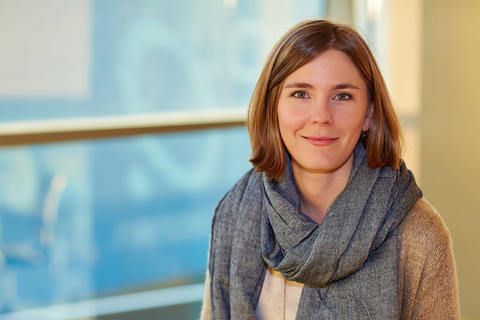Sala de prensa
Noticias
NanoGUNE has joined the Technological Vouchers program from Fomento SS
CIC nanoGUNE y Astilleros Balenciaga colaboran en el análisis del acero naval
CIC nanoGUNE y Astilleros Balenciaga han colaborado conjuntamente para comprobar que el proceso de conformado térmico del acero naval utilizado para la construcción de buques de mediano tamaño no afecta negativamente a la microestructura del material.
The Electronic Structure Library (ESL): a modular software development paradigm
First steps to work on the issue of gender equality
Equality is a cross-cutting issue that must be worked out from many different fields and should be addressed from different perspectives. NanoGUNE has made the first steps to work consciously and systematically on the issue of gender equality, developing a diagnosis of the situation in a report and also is working on the development of the first Gender-Equality Plan.
CIC nanoGUNE lanza una nueva tecnología disruptiva que permite un parto más seguro de los bebés
El Grupo de Nanoingeniería de nanoGUNE ha desarrollado una nueva tecnología que permite el monitoreo no invasivo y continuo de los riesgos fisiológicos de los bebés durante el parto en tiempo real. La tecnología ayuda a los obstetras a tomar decisiones rápidas y, por lo tanto, a reducir el creciente número de cesáreas en todo el mundo.
Publication of the 2020 Magnetism Roadmap
Under the Guest Editorship of nanoGUNE’s Research Director Dr. Andreas Berger, the Journal of Physics D – Applied Physics just published the 2020 Magnetism Roadmap.
La iniciativa "Emakumeak Zientzian" reconocida con el sello STEAM Euskadi
La iniciativa "Emakumeak Zientzian" ha sido reconocida con el sello STEAM Euskadi por el Gobierno Vasco por fomentar la educación STEAM en Euskadi.
nanoGUNE reaches new depths in infrared nanospectroscopy
Researchers from the Nanooptics Group at CIC nanoGUNE demonstrate that nanoscale infrared imaging – which is established as a surface-sensitive technique – can be employed for chemical nanoidentification of materials that are located up to 100 nm below the surface. The results further show that the infrared signatures of thin surface layers differ from that of subsurface layers of the same material, which can be exploited to distinguish the two cases. The findings, recently published in Nature Communications, push the technique one important step further to quantitative chemometrics at the nanoscale in three dimensions.
CIC nanoGUNE y CIKAUTXO trabajan conjuntamente en la optimización del caucho
CIC nanoGUNE, el Centro de Investigación Cooperativa en Nanociencias, y CIKATEK, la unidad de I+D+i de CIKAUTXO, trabajan conjuntamente para la obtención de caucho de alto valor añadido mediante la aplicación de la nanotecnología.
La empresa GraphenePioneer ganadora de la 1ª convocatoria Global Graphene Call
Agenda
| Lun | Mar | Mié | Jue | Vie | Sáb | Dom |
|---|---|---|---|---|---|---|
|
1
|
2
|
3
|
4
|
5
|
6
|
7
|
|
|
|
|
|
|
|
|
|
8
|
10
|
11
|
12
|
13
|
14
|
|
|
|
|
|
|
|
|
|
|
15
|
16
|
17
|
18
|
19
|
20
|
21
|
|
|
|
|
|
|
|
|
|
22
|
23
|
24
|
25
|
26
|
27
|
28
|
|
|
|
|
|
|
|
|
|
29
|
30
|
31
|
1
|
2
|
3
|
4
|
|
|
|
|
|
|
|
|
Eventos
- 04/02/2026 al 06/02/2026
nanoGUNE Winter School 2026
nanoTECA
Encuentra fotos, imágenes experimentales, vídeos, audios y elementos de la imagen corporativa de nanoGUNE.











